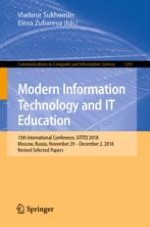2020 | OriginalPaper | Chapter
Esthetic Education in Mathematics Lessons with the Use of Software Products
Authors : Aibek Dautov, Kaiyrzhan Kozhabaev, Alimbubi Aktayeva, Nadezhda Gagarina, Ludwig Van Graan
Published in: Modern Information Technology and IT Education
Publisher: Springer International Publishing
Activate our intelligent search to find suitable subject content or patents.
Select sections of text to find matching patents with Artificial Intelligence. powered by
Select sections of text to find additional relevant content using AI-assisted search. powered by
